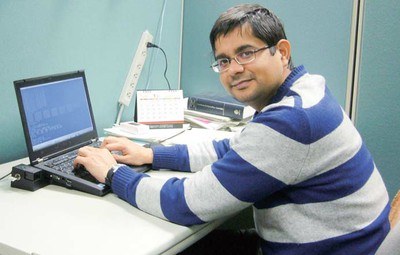鉄/炭化物(窒化物)界面の第一原理計算:局所エネルギー、局所応力による分析
 Vikas Sharma
Vikas Sharma
産業技術総合研究所関西センター
ユビキタスエネルギー研究部門
Development of high-performance metallic materials for structural and thermal applications is crucial to attain more efficient use of energy in the society. In order to improve the mechanical performance, strength and toughness, of iron or steel, precipitates such as transition-metal carbides or nitrides are generated inside it by thermal processes. The size of precipitates, the structure and nature of iron/precipitate interfaces and the stress around the interfaces are crucial to control the mechanical performance. The presence of lattice misfit between the precipitate and iron is an essential issue, which induces the misfit stress at the interface, affecting the size of precipitates and the bulk mechanical properties. In our project, large-scale first-principles calculations of semi-coherent iron/carbide (nitride) interfaces without misfit strains are performed by order-N scheme. On the other hand, it is important to make basic analysis of local stress and local energy at the coherent iron/carbide (nitride) interfaces based on the behavior of electrons. I basically deal with this subject. We use the projector augmented wave (PAW) method with plane-wave basis based on the density-functional theory with the help of the QMAS (Quantum MAterials Simulator) code developed in AIST. By this code, we can obtain local energy and local stress in each local region inside the supercell of iron/precipitate interfaces, via the energy-density and stress-density calculations combined with proper integration techniques to settle the gauge-dependent problem. We have started with a Fe(001)/TiC(001) coherent interface, where we have found the interface stresses caused by the lattice origin and the electronic origin.
 |
|




